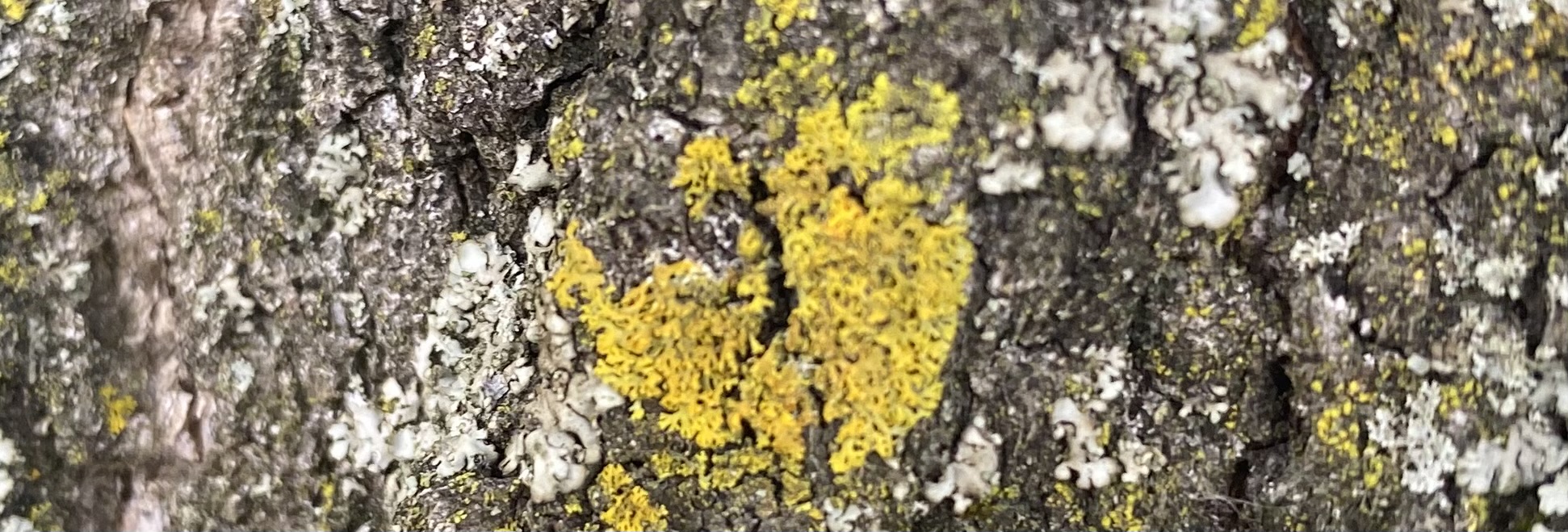For my botanical Survey, I decided to use Antrim Park. Antrim is a quaint park with a small lake. It also has a portion of a small woods and then the Olentangy River and trail run through one end of it. It includes a diverse landscape and a diverse botanical community. It’s located here in Franklin County, so it has Limestone soil. Calciphiles can be found throughout the park. The park itself has a relatively flat layout and is a wonderful spot for fishers, runners, walkers, and bikers. It even has a playground area and soccer fields for kids.

When exploring any new area, knowing what dangers lie around to look out for is important. Especially when exploring wooded areas, those allergic to Poison Ivy must be very aware of their surrounding and know what to look out for. This mean green itch-causing machine is something we have all been told to look out for, but may not know exactly what it looks like. Below is a photo I took at Antum Park of Poison Ivy.
This plant has distinct oppositely compounded leaves that come in groups of three. They are toothed with non-netted veins. It is a vine that creeps up trees and across forest floors. watch out for this green monster the next time you go exploring.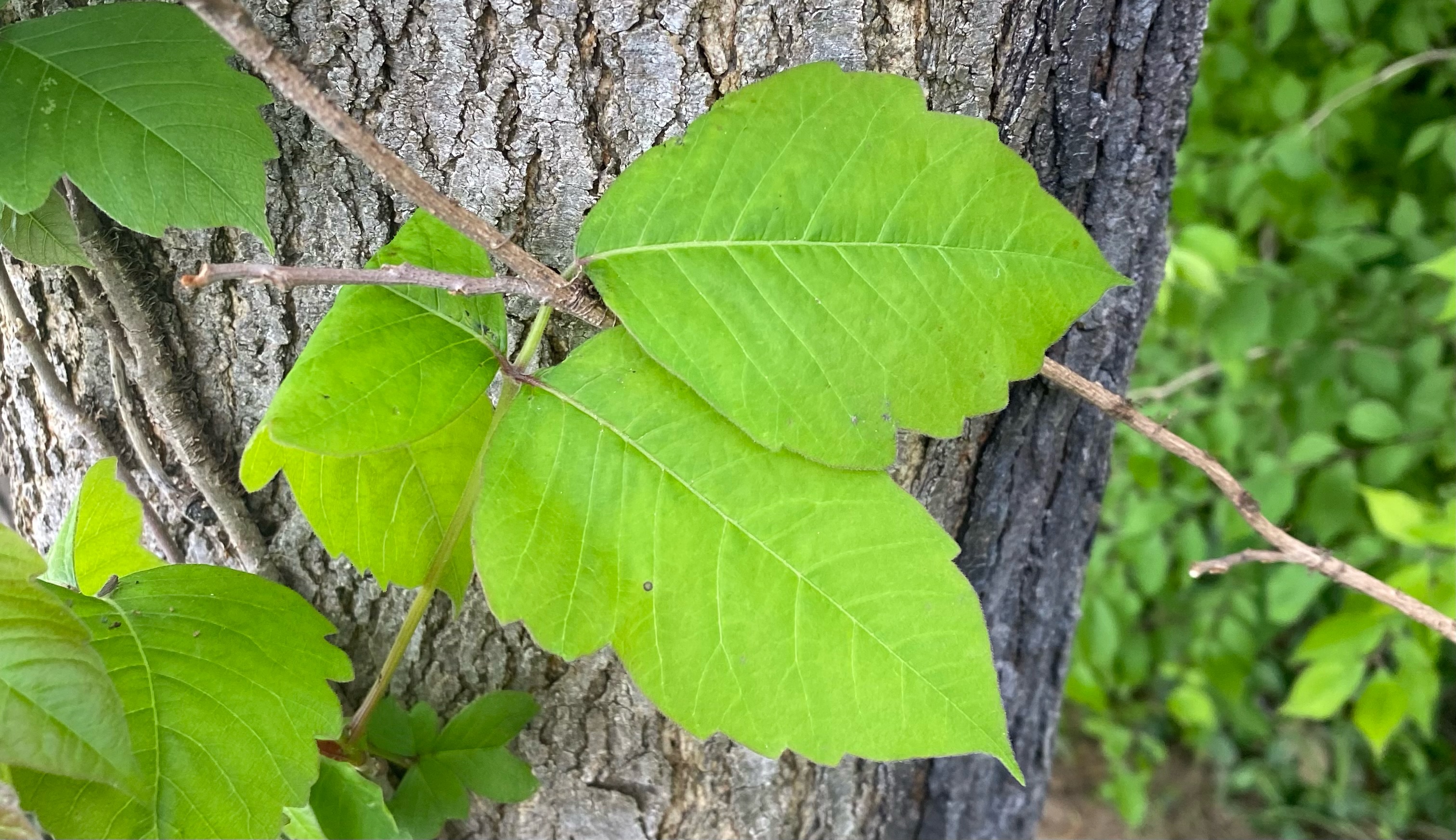
Flowers and Inflorescences
Common Fleabane
(Erigeron philadelphicus)
I found many little patches of this common fleabane surrounding the Lakes here at Antrim Park. They were pink, white, or somewhere in between. This flower had radial symmetry and a capitulum inflorescence type. This is a composite ray flower, it has many rays that appear like petals of a single flower, then the little yellow disk in the middle is actually lots of little flowers grouped together. Each flower in the middle has 5 petals, 5 stamens, and 2 pestles. It has a syncarpous gynoecium and an epigenous arrangement. It will eventually have an achene fruit https://www.minnesotawildflowers.info/flower/philadelphia-fleabane.
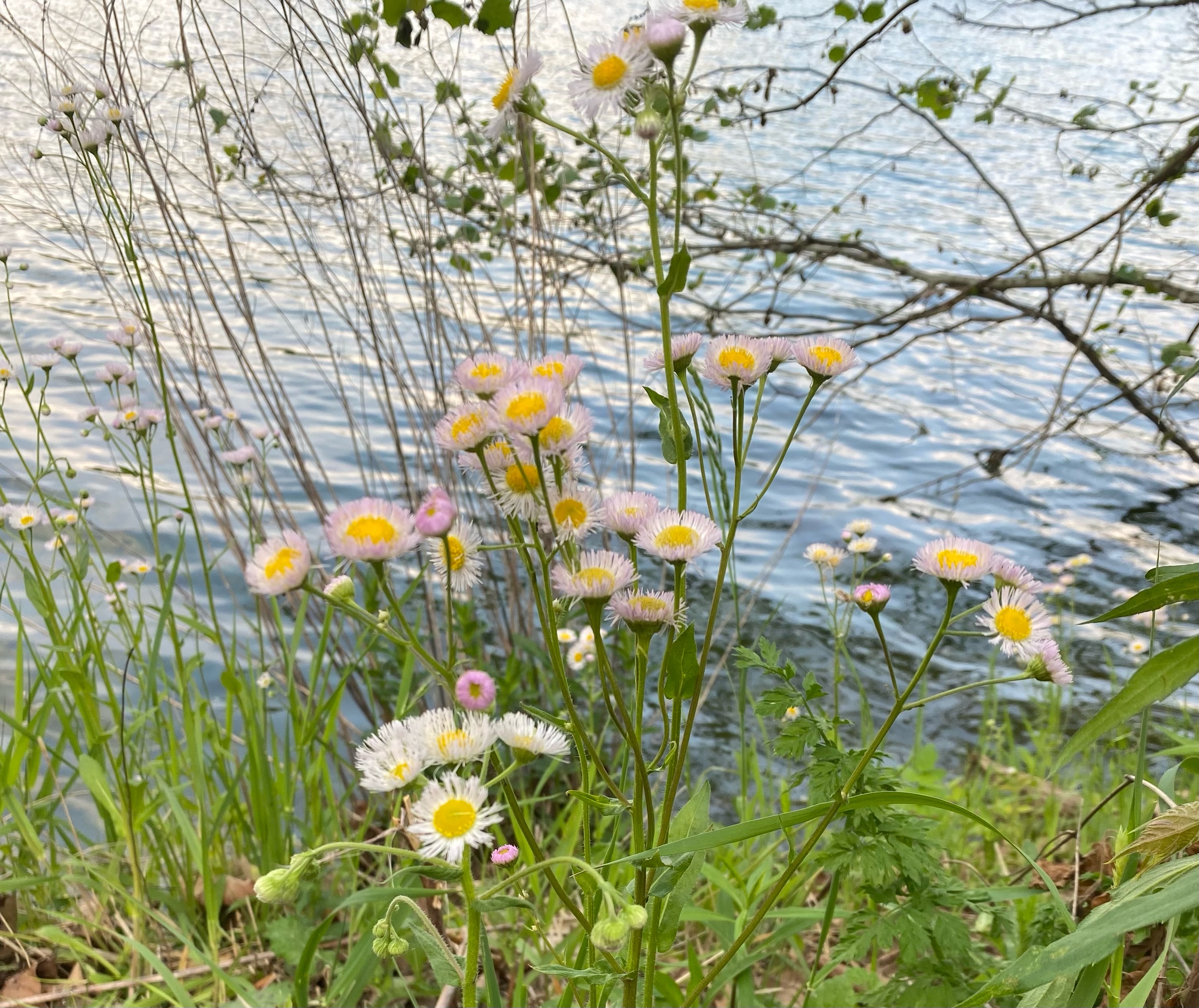
Pale Violet
(Viola striata)
I found this Pale Violet in the woods area in Antrim Part. This beautiful violet has bilateral symmetry. Two of its five petals were fused, it has 5 sepals and 2 stamens, and 1 pistil. It is unicarpellate with an epigenous arrangement. It has a scapose inflorescence. its fruit is dry and splits when ripe https://gobotany.nativeplanttrust.org/species/viola/striata/.
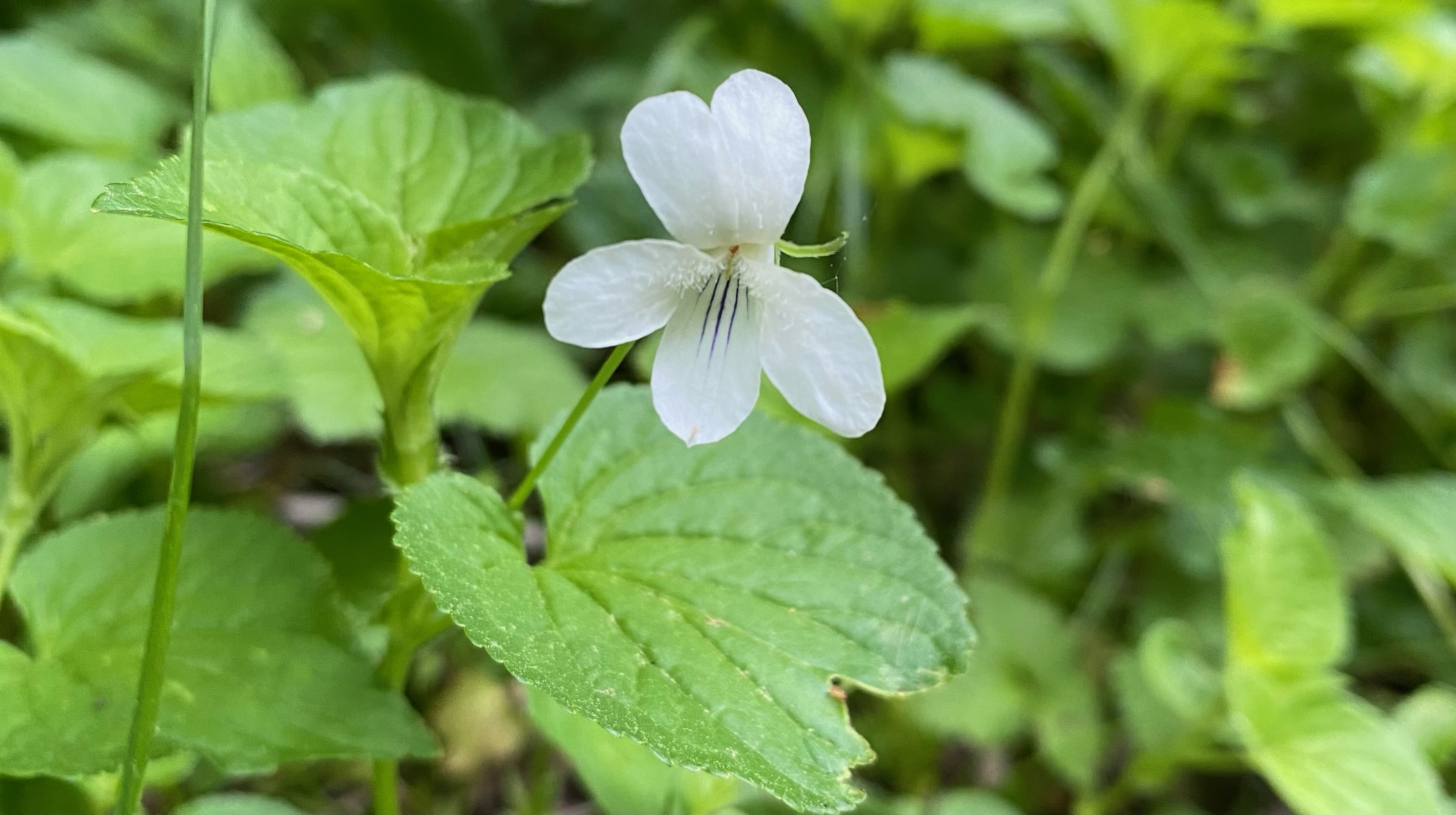
Wild Parsnip
(Pastinaca sativa)
Wild Parsnip was found along the trail/path side of the park. The flower had 5 fused petals, 5 sepals, 5 stamens, and a syncarpous gynoecium. It had an epigenous arrangement. This flower displays radial symmetry and is arranged in an umbel. It will eventually have an achene with a slight wing.
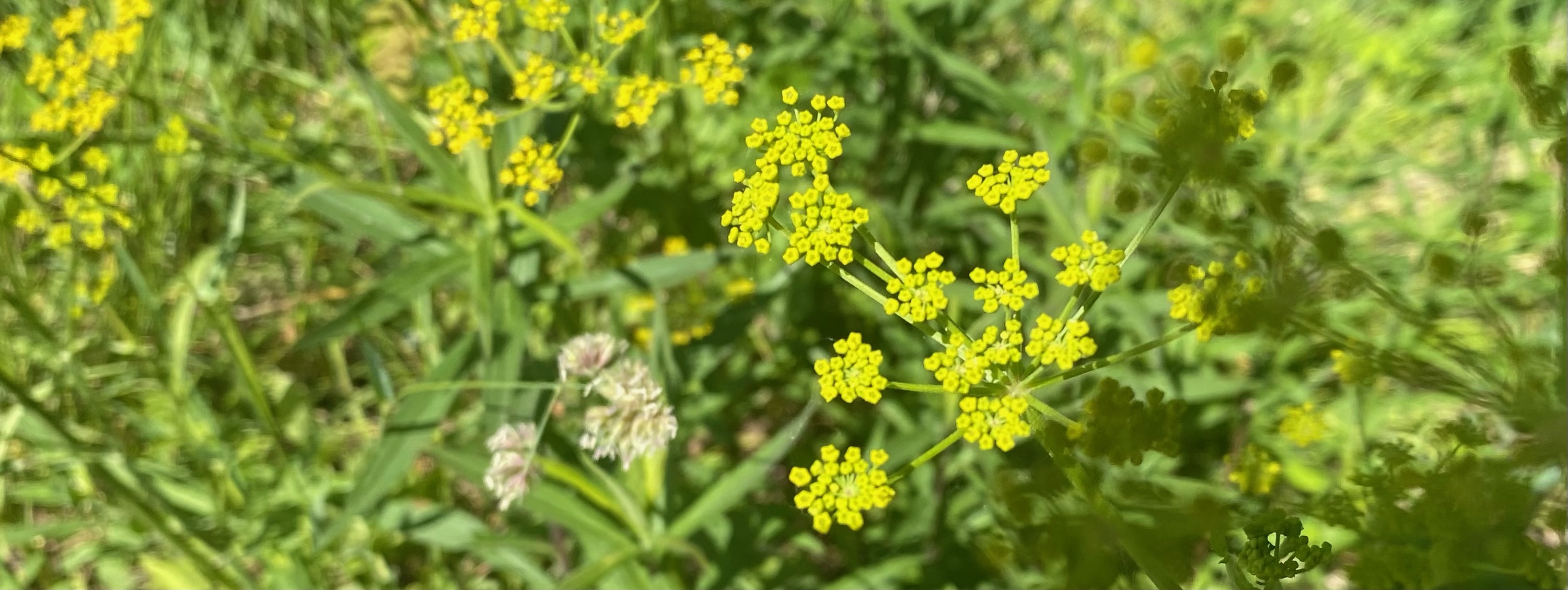
Black Cherry
(Prunus serotina)
This was my favorite plant I found. This beautiful floral wonder was tucked beneath a large woody bush, sitting low to the damp, woods floor. Each individual flower displayed radial symmetry. It had 5 petals, 5 sepals, and an uncountable number of stamens and pistils. The petals, sepals, and stamens are fused together. It has a perigynous arrangement and a unicarpellate gynoecium. Black Cherry has a spike inflorescence type. It will eventually have a drupe fruit.

Four Invasive Species
Japanese Honeysuckle
(Lonicera japonica)
Everywhere you look throughout this park is Japanese Honeysuckle. It has overtaken all the trees surrounding the lake. Japanese Honeysuckle originated in East Asia but was brought to America for ornamental usage. It was able to spread and choke out native plants quickly. It’s often found along roadsides and in woods. For small infestations of the plant, they can be removed by pulling them. Large areas can be mowed down to the ground and sprayed with herbicides https://www.thespruce.com/japanese-honeysuckle-vines-2132890.
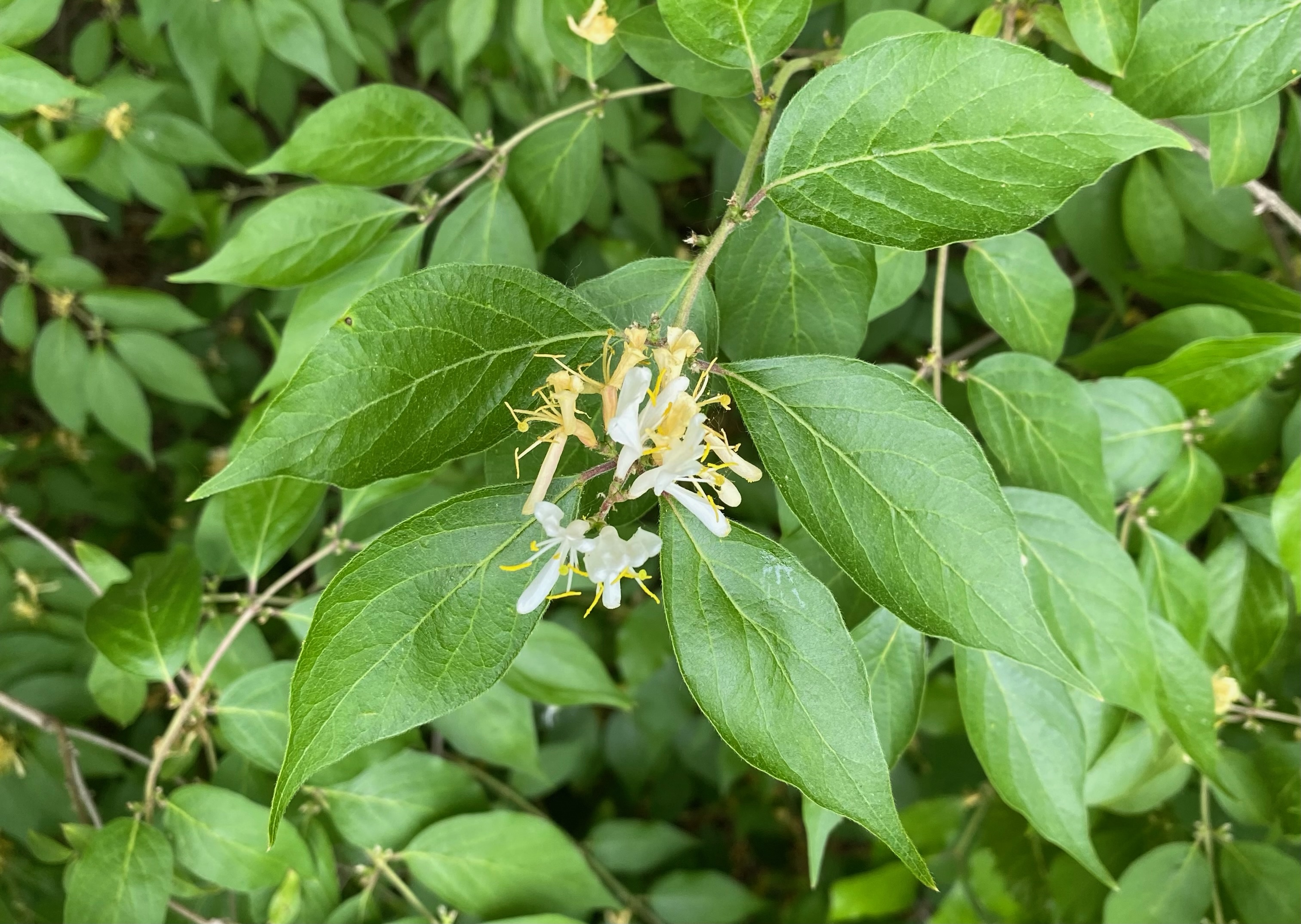
Multiflora Rose
(Rosa Multiflora)
Though not as ubiquitous as the Honeysuckle, the Multiflora Rosa can be found in areas throughout the park. It was often found around the lake. This species is native to most Asian countries but was introduced to the U.S. in the 1860s as an ornamental garden plant. It also became useful for highway boundaries to help break up the brightness of headlights. Growing concerns were being raised in the 1960s about the potential dangers of this plant as it was able to quickly spread and compete with native plants. This plant is found along roadsides and can creep into people’s backyards. It’s recommended that it’s manually pulled, and sprayed with herbicides. It’s important to guard against its further spread https://www.ecolandscaping.org/07/landscape-challenges/invasive-plants/multiflora-rose-an-exotic-invasive-plant-fact-sheet/.
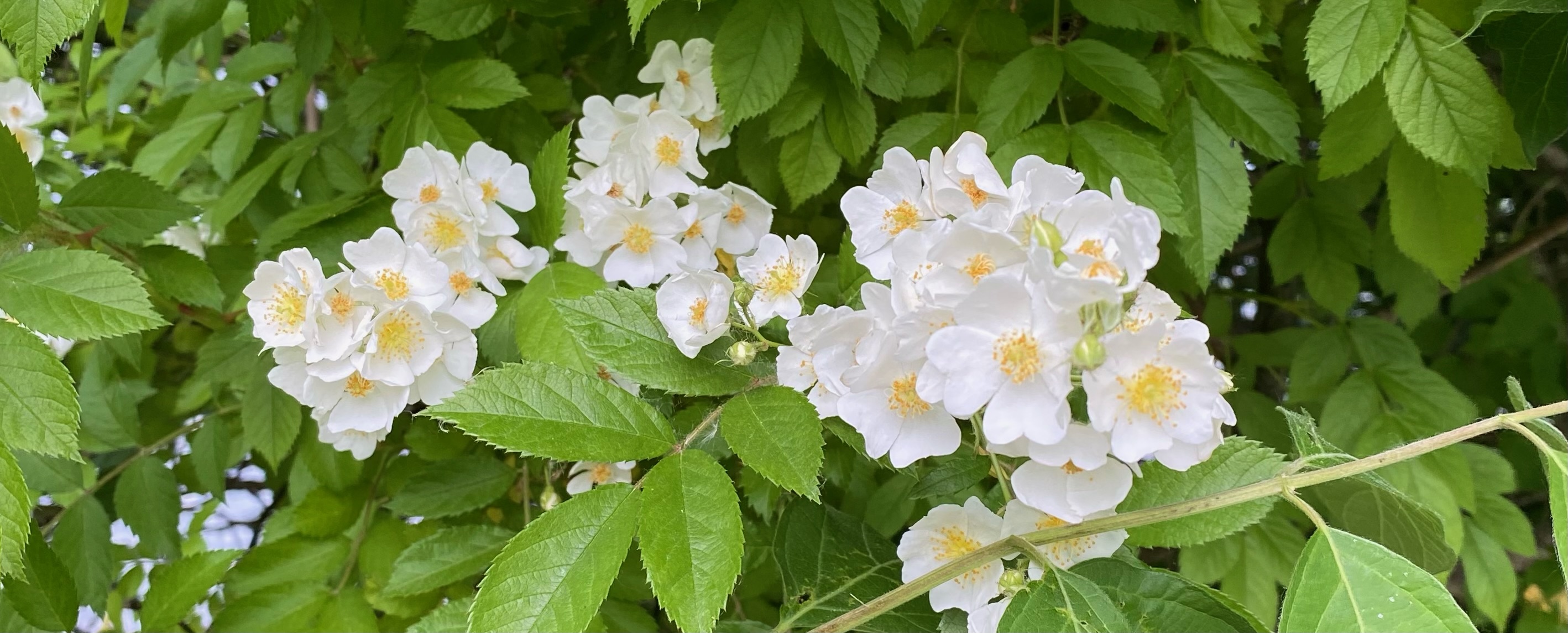
Red Clover
(Trifolium pratense)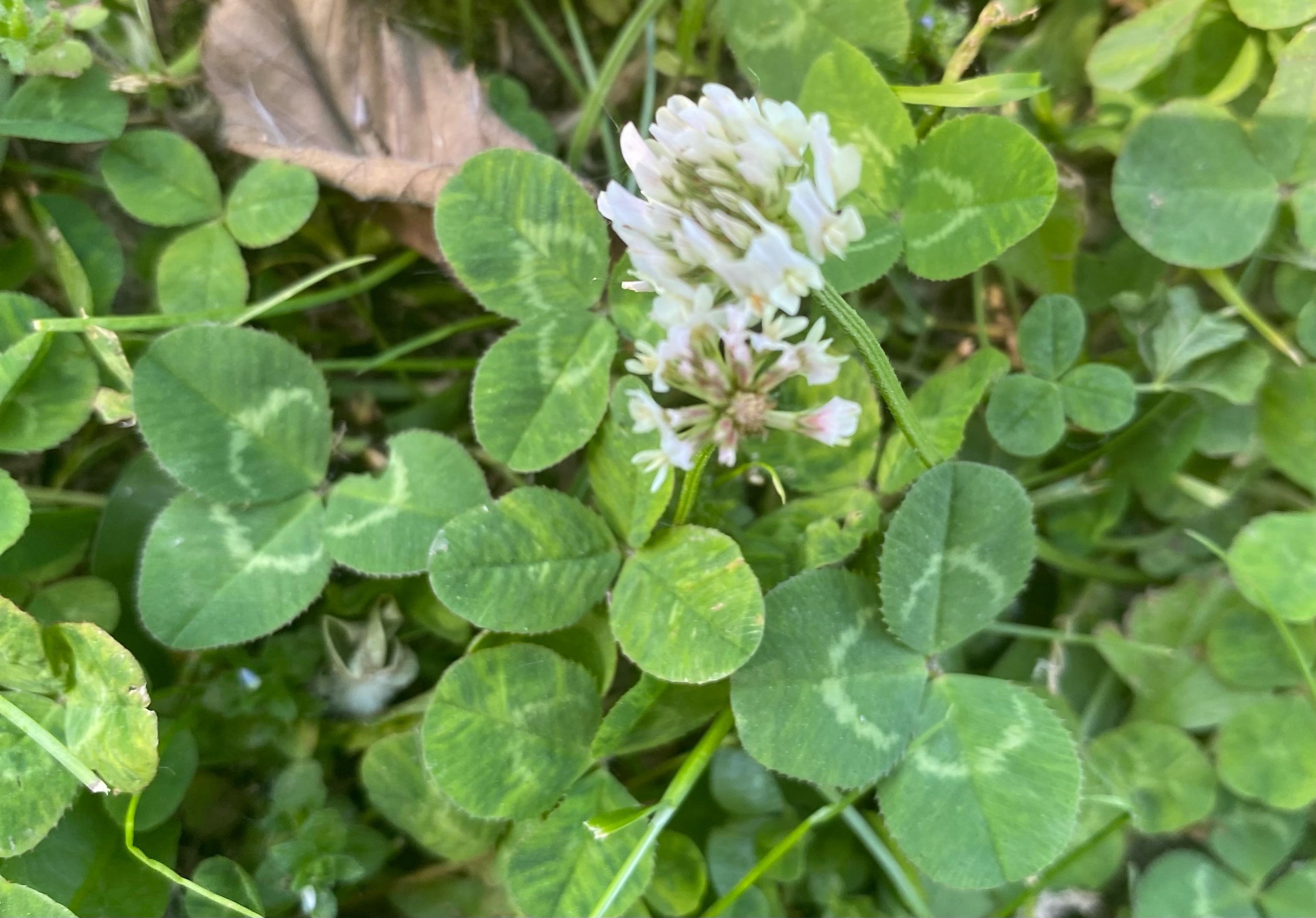
When walking through the fields, along paths, and by the lake, everywhere you look is the little Red clover. As unsuspecting as it might look, it is actually an invasive species. This little pink flower originated in Europe, Asia, and North Africa. It was introduced to the U.S. in the 1500s as a crop for grazing cattle http://www.bio.brandeis.edu/fieldbio/EFG_DEB_SHU/species%20pages/Red%20Clover/Red%20Clover.html#:~:text=History%20and%20Comments%3A%20Red%20Clover,to%20use%20in%20crop%20rotations. It rapidly spreads and competes with native plants. It is recommended to control it using herbicides https://www.misin.msu.edu/facts/detail/print.php?id=125. It can be found in most yards, fields, and woods. Herbicide can be used to spray for this flower or pull at the root.
Dame’s Violet
(Hesperis matronalis)
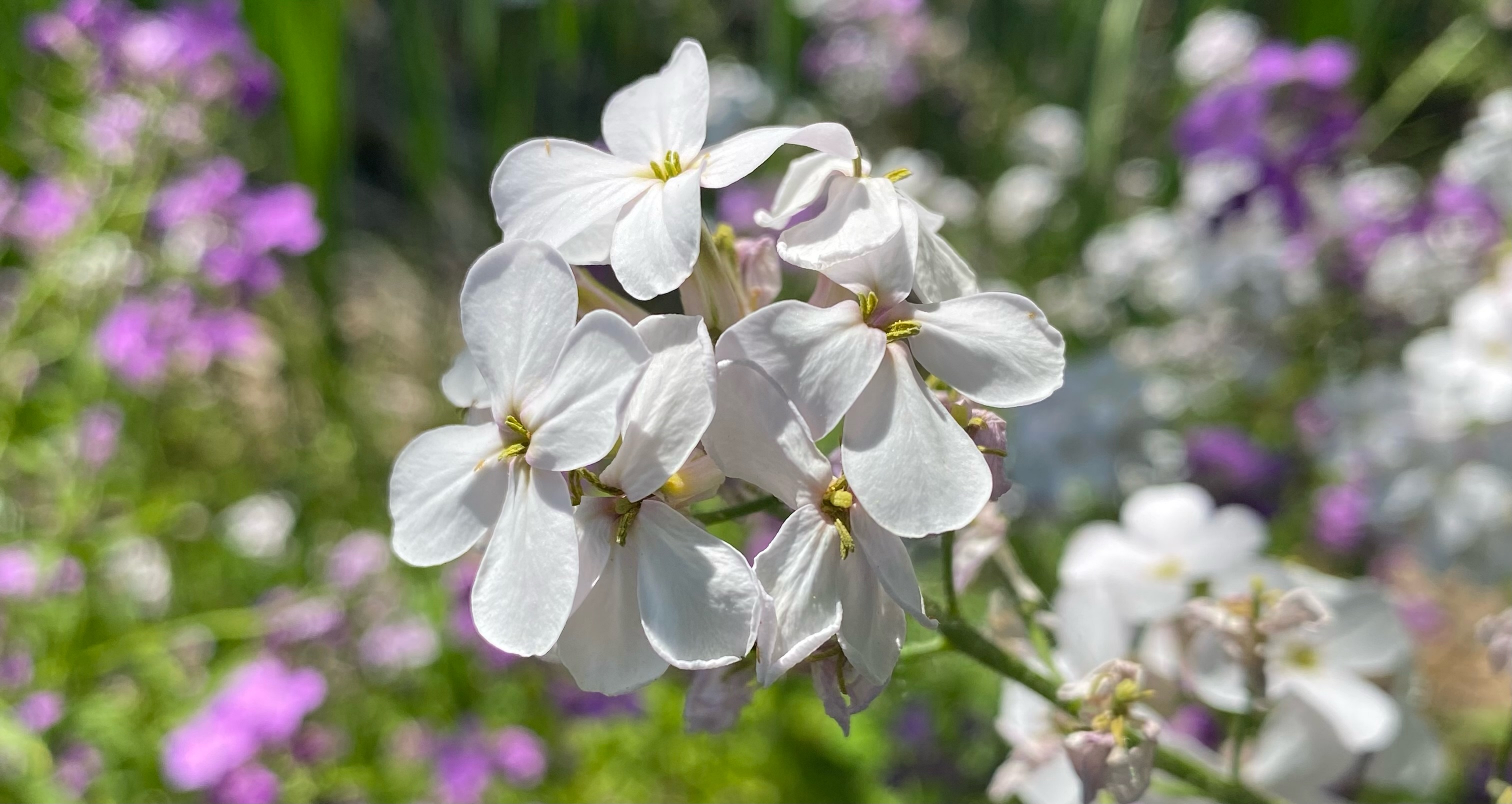
This plant first escaped from gardens. It is able to quickly grow and replace that native species in an area. It’s suggested that if you see it pulls it out, and be careful to get all of the roots. When disposed of, it needs to be disposed of inside of a bag as it can grow in a compost pile. https://www.michiganaudubon.org/invasive-species-focus-dames-rocket/#:~:text=Like%20garlic%20mustard%2C%20dame’s%20rocket,why%20it%20spreads%20so%20rapidly! Its often found in moist areas.
Four Trees
Red Mulberry
(Morus rubra)
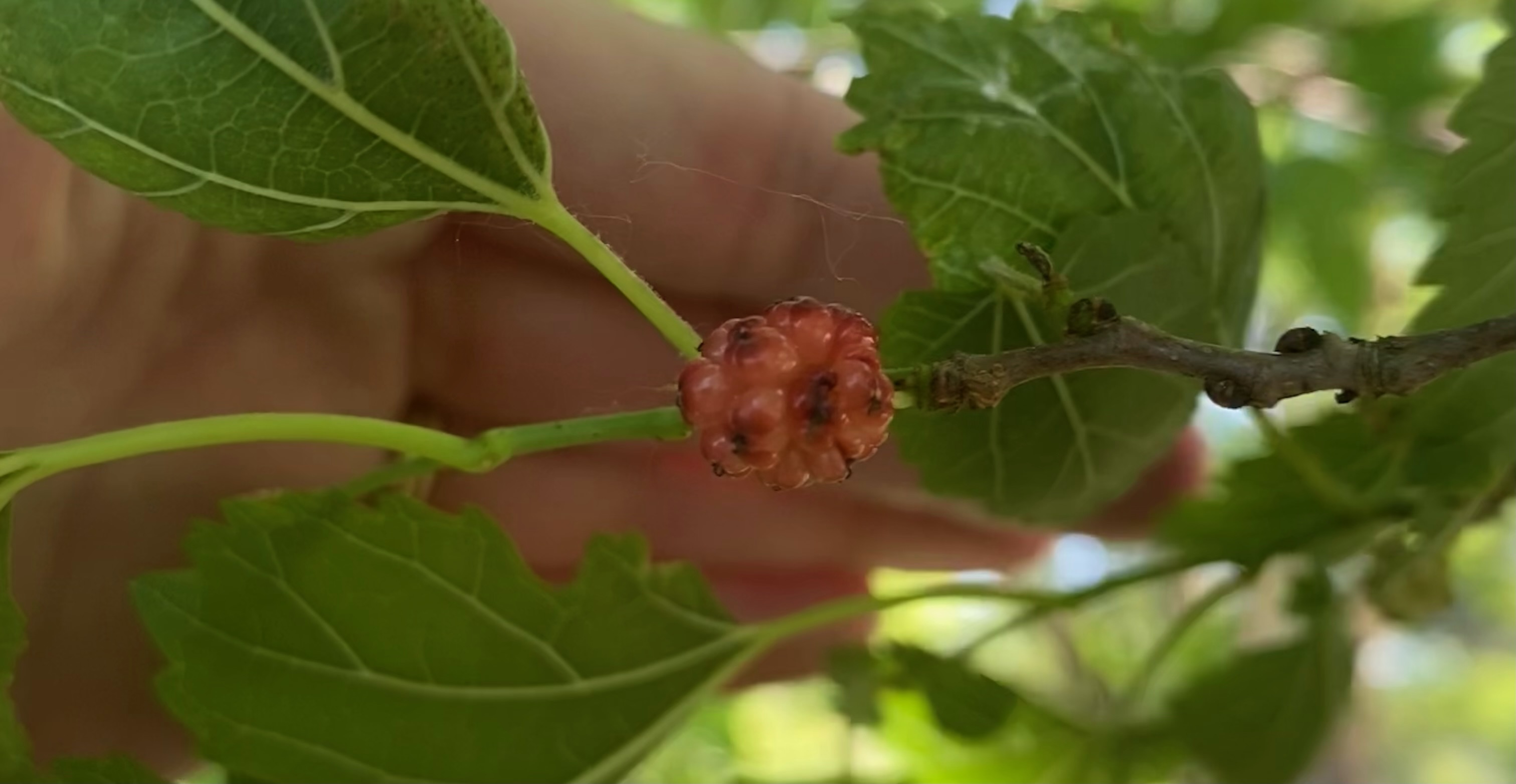
The Red Mulberry had juicy, turning dark purple fruits. they we along with multiple units packed tightly together. The fruits were not winged and not a cone.
Sweetgum
(Liquidambar styraciflua)
The Sweetgum fruit is spiky, with each spike splitting along two lines. It is a dry, compound fruit, that doesn’t split upon maturity. It is not winged and it is not a cone. 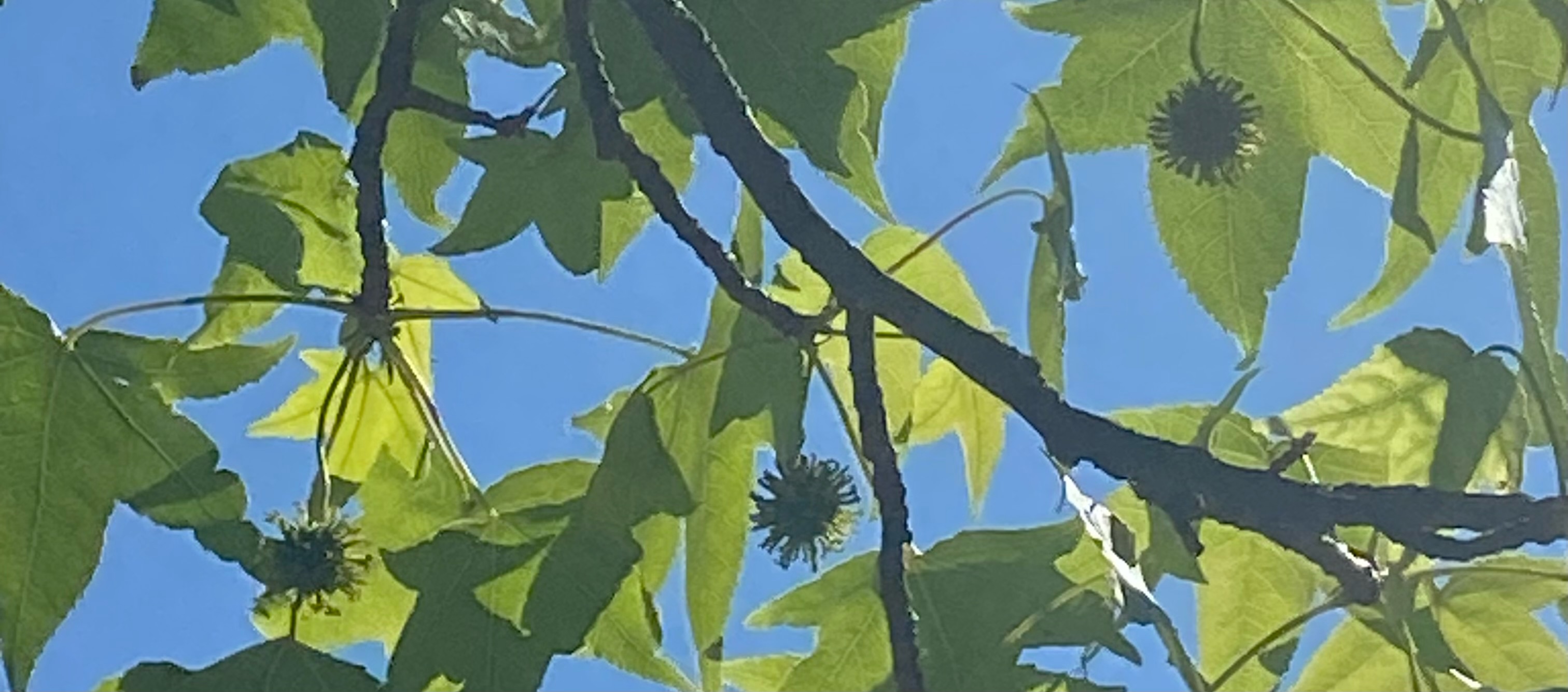
Red Pine
(Pinus resinosa)

The Red pine is a unique plant. It was also one of the few fruits I was able to find. It had a cone with an alternate scale and the cone itself was more than half an inch long. The seeds had terminal end wings that were persistent. The bracts were not visible and the cone scales were thickened. The cones were symmetrical and the older ones were opened. Scales were unarmed and rounded on the tips.
Ashleaf Maple
(Acer negundo)
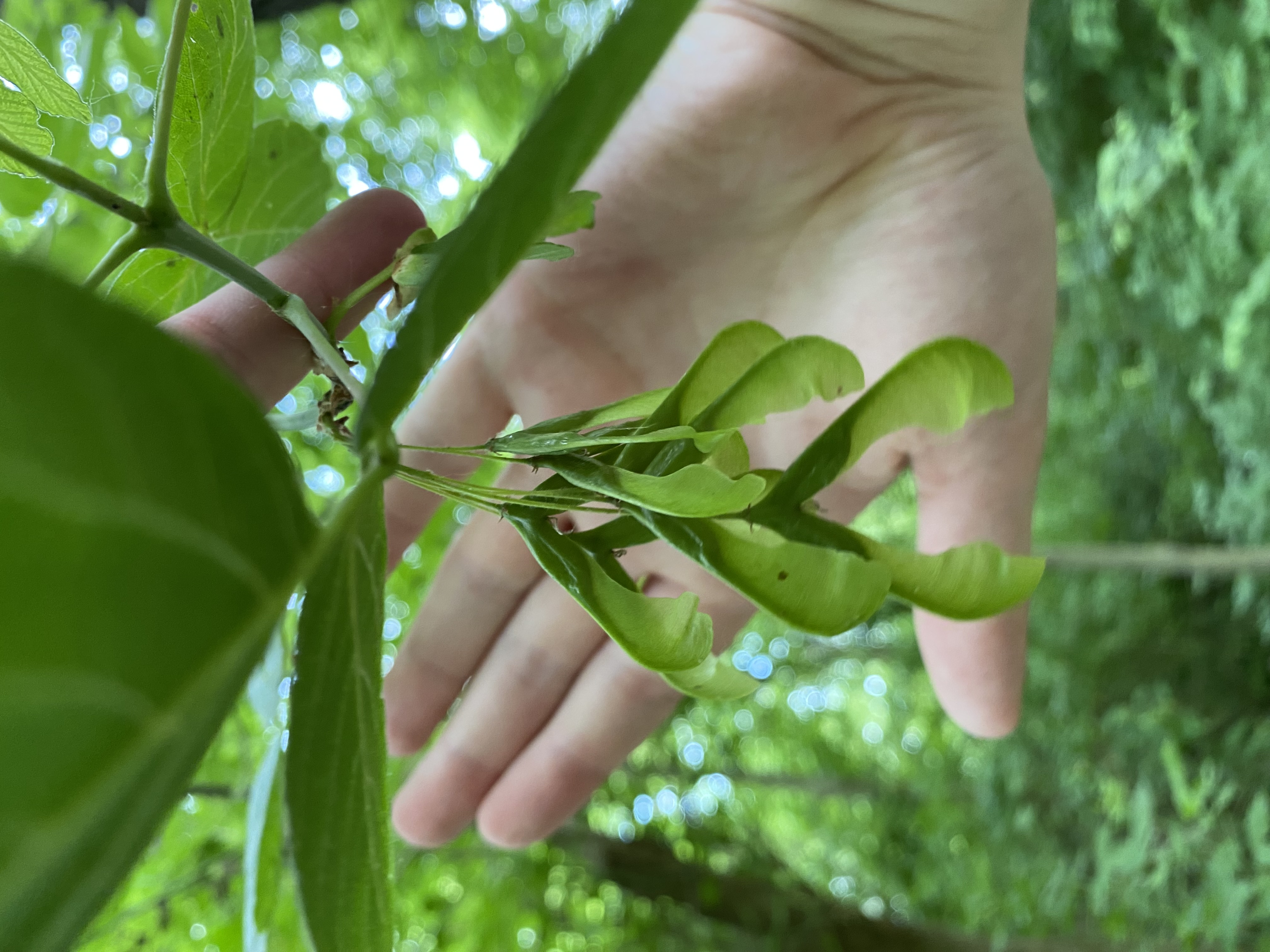
The fruit from this tree had two samaras paired at their ends. The fruits were still attached to the tree, appearing to be released in the fall. The fruits were more closely paired, appearing more of a “v” shape.
Four Species of Moss or Lichens
Rough Speckled Sheild Lichen
(Punctelia rudecta)
This Rough Speckled Shield Lichen can grow on a variety of surfaces, including rocks, in most degrees of sunlight. It’s a lichen commonly found throughout Ohio.
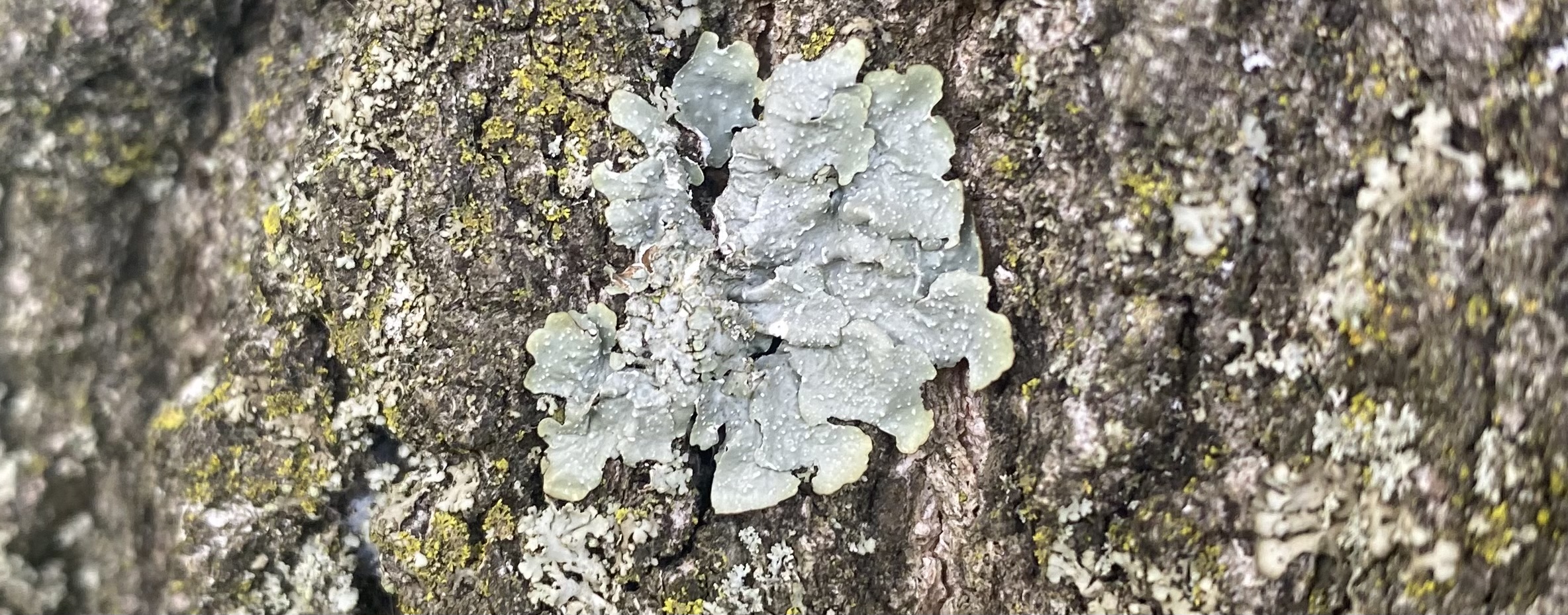
Hooded Sunburst Lichen
(Xanthomendoza fallax)
This bright yellow Hooded Sunburst Lichen can easily be confused with its similar-looking counterpart, the Lemon Lichen. You can tell them apart using KOH. When KOH is applied to the Hooded Sunburst Lichen, it will turn a dark purple color. This reaction does not occur in the lemon lichen.
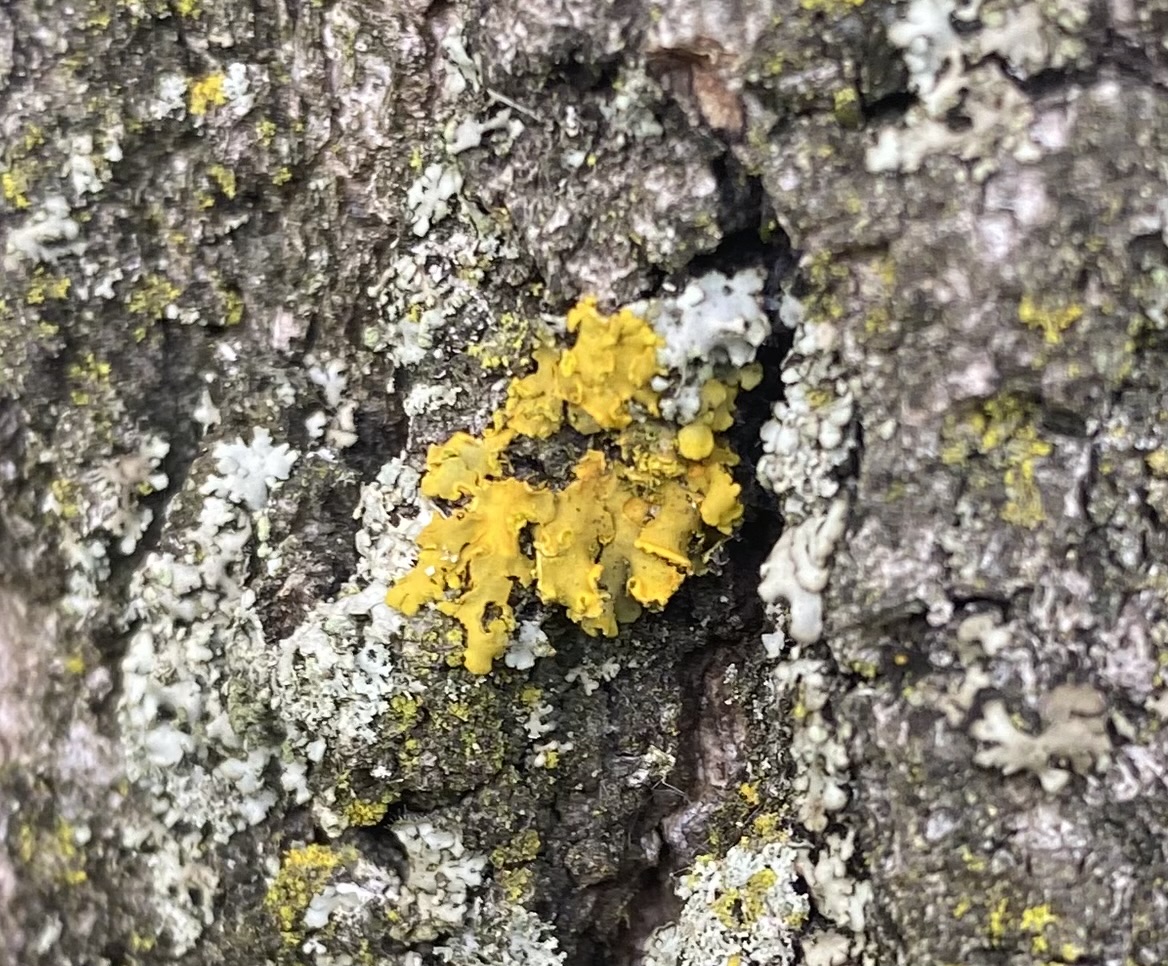
Common Greenshield Lichen
(Flavoparmelia caperata)
The Common Greensheild Lichen is very common in Ohio. It can grow on most woody surfaces. It reproduces via soredia.
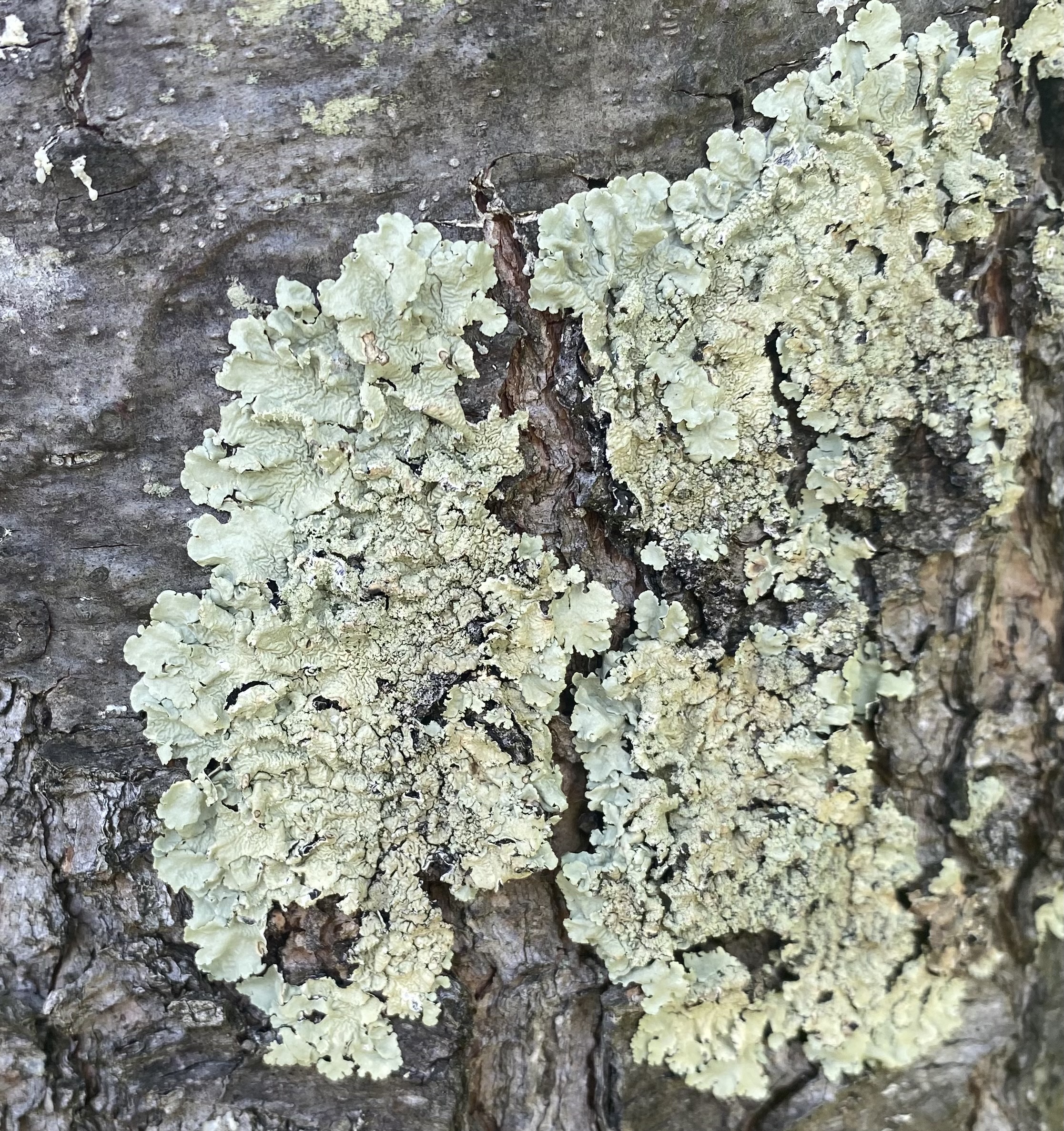
Lemon Lichen
(Candelarin concolor)
The Lemon Lichen is a small lichen found throughout the US. It is often found growing in direct sunlight on trees.
